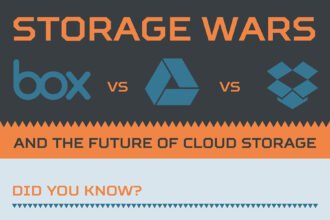Many recent studies show cloud computing is an eco-friendly and cost-efficient option for businesses looking to save on IT expenses. Green IT, or green cloud computing, is getting more attention with recent studies reporting greater carbon efficiency, increased cost savings and improved operations efficiency.
Many recent studies show cloud computing is an eco-friendly and cost-efficient option for businesses looking to save on IT expenses. Green IT, or green cloud computing, is getting more attention with recent studies reporting greater carbon efficiency, increased cost savings and improved operations efficiency.
A Salesforce.com study found that one transaction is, on average, 95 percent more carbon efficient when processed in the cloud vs. when processed on-premises. In 2010 alone, Salesforce.com saved an estimated 170,900 tons of carbon, the equivalent of 19.5 million gallons of gas by switching to the cloud.
Another report by the Carbon Disclosure Project (CDP), Cloud Computing – The IT Solution for the 21st Century, found that cloud computing may save businesses $12.3 billion annually by the year 2020. The projected adoption of cloud computing by businesses shows an increase from 10 to 70 percent of total IT expenditures.
 How does cloud computing save on energy? In addition to server consolidation, the cloud does not require the same hardware and resources as physical servers. As a result, companies can avoid the initial costs of infrastructure investments.
How does cloud computing save on energy? In addition to server consolidation, the cloud does not require the same hardware and resources as physical servers. As a result, companies can avoid the initial costs of infrastructure investments.
When looking at total cost of ownership of traditional computing, or TCO, resources normally include numerous physical servers with a variety of specifications, versions, bios, CPU, memory configurations, etc., in addition to backups, anti-virus, Cisco network switches, racks, network cables and so on.
Online Tech’s private cloud saves companies 50 percent on hardware and 90 percent on management by using only a few servers, SAN, network switches, power strips and a quarter of a rack.
By using less hardware and requiring less physical management, cloud computing also reduces energy use when it comes to cooling, heating and power requirements. Data centers lose energy efficiency in three key areas: cooling the room, cooling the servers and keeping servers idle.
In addition to reduced energy use, emissions are also reduced dramatically with virtualization. For example, 26 physical servers and a network would produce 210,269 pounds of carbon dioxide per year compared to an Online Tech private cloud hosting solution that has the capacity of 35 servers and produces only 27,903 pounds of carbon dioxide per year.
In the cloud, elasticity and scalability allows businesses to control the amount of server usage. Companies can adjust the amount of services they need at any given time rather than paying for yearly server maintenance. Agency data estimates that the typical Federal U.S. Government server uses only 27 percent of its manufacturing capacity, according to Blogs.Forbes.com. A recent report by McKinsey & Company reveals that the average server use for businesses rarely exceed 6 percent although companies pay for 100 percent of server operating costs.
Cloud hosting also saves time in deployment and access. CDP profiled a few large businesses that made the transition to cloud computing and their experience with increased efficiency:
- “Carbon reduction is one driver, but not the primary driver. The primary driver is time to market. Developers used to take 45 days to get new servers, but in our virtualized private cloud environment, it takes just a couple of minutes,” said Paul Stemmier of Citigroup, as quoted by the CDP.
- Boeing has over 8,000 virtualized servers after starting their transition to the cloud in 2008. “Previously, it could take up to three months to provision and install a new server in the data center,” said Jim Rupert, the company’s enterprise technical architect. “With the development of a private cloud for the firm’s infrastructure, servers will be provisioned within minutes.”
As cloud computing continues to rise with even higher projected long-term growth, companies can no longer afford to overlook cloud computing benefits and efficiency compared to traditional in-house computing.






